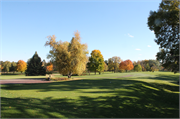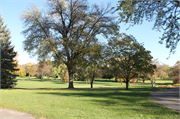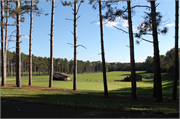| Additional Information: | The New Richmond Golf Course, located at 1226 George Norman Drive, began as the New Richmond Golf and Country Club in 1921. The club was first organized by Richard Schmuck, who owned a resort at the southern end of Bass Lake south of the City of New Richmond. The site of the course moved closer to the city in 1923 when the Soo Line railway leased 45 acres to the club west of the city and north of the river. The grand opening, featuring 58 charter members, all from New Richmond, was completed in the spring of 1924, and W. J. Grover was named Club President. The golf course became immediately popular in the 1920s and 1930s. An access road was constructed to the south. The golf club purchased land from the railway in 1929 and restricted membership in the club to residents of New Richmond. Albert Campbell, the groundskeeper of the course from 1928 to late 1960s, constructed a non-extant house on the course, and the location of greens and holes have been rearranged a number of times since the 1920s.
In 1945, Doughboy Industries, which operated the major mill in New Richmond, provided funding to improve the course, and ownership of the golf course land was transferred to the City of New Richmond. For more information on Doughboy Industries, refer to the Industry Chapter. In 1947, the course was expanded as the club purchased adjacent farmland and doubled its size with new parking and outbuildings. Funds were raised to complete a new 9-hole course design with most of the expense covered by Doughboy Industries. The entry road was moved to its present location aligned with 180th Street the same year. The non-extant clubhouse was completed in 1948 and remodeled in 1955, doubling its size. The old clubhouse burned down in 1967, and a new Contemporary style one was constructed the following year, designed by architect Michael McGuire and constructed by the Derrick Construction Company. The new clubhouse featured a restaurant, bar, club rooms, and storage and cost $100,000 to build.
Following an extensive planting program in the 1970s, the golf course expanded to 18 holes in 1982 as additional land to the northwest and southeast was purchased and donated to the club. The clubhouse was expanded with a pro-shop and bar lower-level addition and patio in 1989. In 1995, the golf course added the links, a smaller 9-hole design, to the west including a Rustic style clubhouse building for the links. The 173-acre golf course was renovated in 2002, and a driving range and the Swanda Learning Center, a practice golf facility, were completed in 2007. |
|---|



